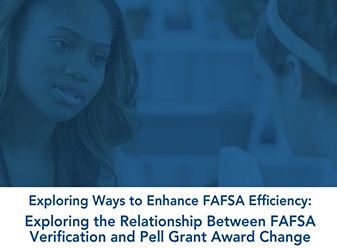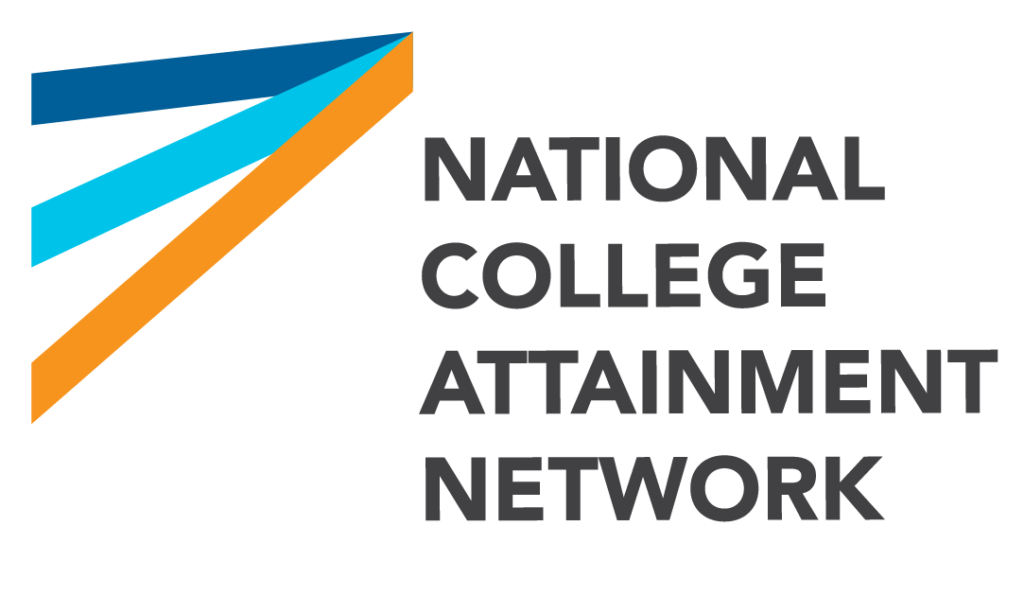- MorraLee Keller, Director of Technical Assistance, National College Attainment Network
- Raymond AlQaisi, Policy & Advocacy Manager, National College Attainment Network
FCAN host: Kathy McDonald, Assistant Director for Network Partnerships
In 2018, 22% of FAFSA filers were selected for verification, the process an institution uses to confirm the data reported on a FAFSA (Free Application for Federal Student Aid) is accurate. Recently, Federal Student Aid (FSA) announced the verification rate has further dropped to 18% for 2021-22 FAFSA filers. The purpose of verification is to prevent improper payments.
Although that represents a significant decrease from recent years — when the verification rate was between 30 and 38% — the process is still a substantial barrier for students who qualify for Pell Grants, which are designed to assist students from low-income households.
“We like to point out that the Internal Revenue Service overall audits less than 1% of tax filers, so even 22% is high in comparison,” said Raymond AlQaisi, Policy & Advocacy Manager for the National College Attainment Network (NCAN). “For Pell-eligible students, the rate is much higher, approximately 50% depending on the year.”
AlQaisi shared that information and much more during Part IV of FCAN’s “Paying for College” webinar series on March 11, which highlighted findings from NCAN’s recent comprehensive review exploring the impact of FAFSA verification on Pell Grant Awards.
Key findings from NCAN’s Review
NCAN utilized data from two FAFSA award cycles — 2018-19 and 2019-20 — to examine the impact of verification on FAFSA filers.
“The top takeaway is that over 70% of students selected for verification in both years we studied saw no change in their Pell grant award,” AlQaisi said. “Only 3% of students who completed verification lost Pell Grant eligibility altogether.”
Additionally, Auto Zero EFC filers — applicants from low-income households who met the tax filing and income requirements to complete a shorter FAFSA and receive a maximum Pell Grant Award — overwhelmingly retained that award after verification (93%-96%).
Although the process is cumbersome, this all suggests students should complete verification if they are selected, since they will get to keep at least some Pell Grant money in most cases.
Verification relief in the age of COVID-19
MorraLee Keller, NCAN’s Director of Technical Assistance, shared information about recent changes designed to simplify the FAFSA and make the verification process easier to navigate during COVID-19.
“The pandemic really added to the complexity of this (FAFSA) process,” Keller said, citing students and counselors having to adjust to virtual sessions on the fly and communities without consistent access to broadband.
Among the relief provided to students and their families as a result of a national emergency:
- Flexibilities have been given to verification documents required to be presented in person or notarized.
- Students may submit documents electronically (or pictures of documents) through a secure portal.
- Students can submit copies of expired documents requested, including a driver’s license when there is no reasonable expectation to get it renewed.
- Parent signatures are also waived when it is not realistic to secure a signature.
Tips for assisting students with verification
Keller also shared some suggestions for any individual working with students selected for verification:
- Make sure students have kept a record of usernames and passwords for the various college log-ins.
- Develop an organization log of verification processes for colleges most highly attended by their students, including when and how students are notified.
- Review student level FAFSA data if your state provides the indicator for being selected for verification and provide targeted outreach to this group of students. In Florida, if your district does not have a data sharing agreement in place with the Office of Student Financial Assistance but would like to do so, contact Pedro Hernandez.
- Use clever virtual options for pictures of documents, helping students create documents to upload and completing signatures.
Keller added that “many colleges have a date when verification documentation is due” and implored students and their families to be cognizant of deadlines. She also noted that the possibility of being selected for verification shouldn’t deter students from applying for free federal aid.
“FAFSA completion is down across the country, but even knowing that verification might come, we have to work with our current Class of 2021 to get them to file for the FAFSA,” she said.
FCAN thanks the following for their generous support of this webinar series:
Cornerstone Funder
Supporter
Show Notes
To learn more about recent changes to the FAFSA verification process — or to view the webinar and download the presentation — take advantage of these resources:
Recording
Slides
Exploring the Relationship Between FAFSA Verification and Pell Grant Award Change (NCAN)
Be sure to visit our Past Webinars page for access to recordings and downloadable material from FCAN’s previous presentations.




